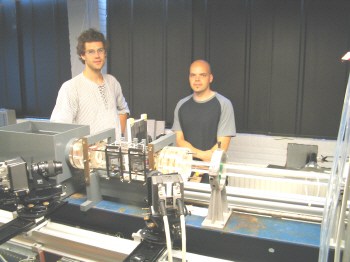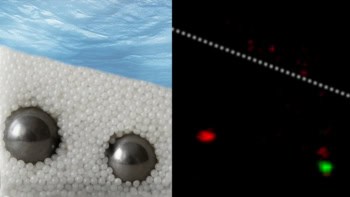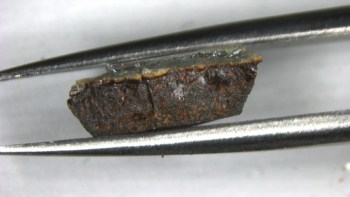Scientists have moved a step closer to understanding turbulence -- often considered to be the last great unsolved problem in classical physics -- thanks to a new experiment at the Delft University of Technology in the Netherlands. Björn Hof and colleagues have directly observed travelling wave patterns during the transition from smooth to turbulent flow in a pipe for the first time (B Hof et al. 2004 Science 305 1594). The results agree with recent theoretical predictions.

Turbulence is common in nature — it is found in weather patterns, river flows and many astrophysical environments — and is also important for many industrial processes. However, the way in which turbulence arises and then sustains itself is still not understood, despite being a subject of research for more than a century.
Stability theory predicts that the flow of a fluid through a straight pipe should remain smooth or “laminar” regardless of how fast the fluid is flowing. However, in practice it can become turbulent even at moderate speeds. Recently, theorists predicted that travelling waves moving through the fluid at different speeds might be responsible for the onset and sustenance of turbulence, although there was no experimental evidence for this at the time.
The Delft team and co-workers in Germany, the UK and the US, began by pumping water into the 26-metre pipe facility in Delft, which is one of the longest recirculation pipes in the world (figure 1). Long pipes are necessary for such experiments because they allow laminar flow to fully develop at large flow rates.
To investigate the transition from laminar to turbulent flow, Hof and co-workers injected a water jet into the pipe through a hole in the wall of the pipe. They then inspected the region of turbulent flow that was produced further down the pipe using a particle image velocimeter. This device uses high-speed cameras and pulsed lasers to measure the whole velocity field across the flow at very high repetition rates.
The team observed clear signatures of unstable travelling wave modes in the pipe. These included local anomalies called “streaks” produced by vortices that transfer fast-moving fluid from the centre of the pipe to the walls, and vice versa (figure 2). Moreover, it found that turbulent flow seemed to be dominated by only a relatively small number of these unstable modes.
“Our main contribution to the problem of turbulence is that we could show that principles from nonlinear systems theory appear to apply to this type of turbulent flow,” Hof told PhysicsWeb. “Unstable solutions to the equations of motion might form the skeleton of a so-called turbulent ‘attractor’ — an attracting region in phase space that sustains disordered turbulent flow indefinitely. These concepts will prove very relevant for our understanding of turbulence in the future.”
The group now plans to determine the lifetimes of the travelling waves and to explore their dynamical behaviour. “It might be possible to use these new insights to control and ‘relaminarise’ turbulent flows, which would be of great interest in many industrial processes,” adds Hof.





